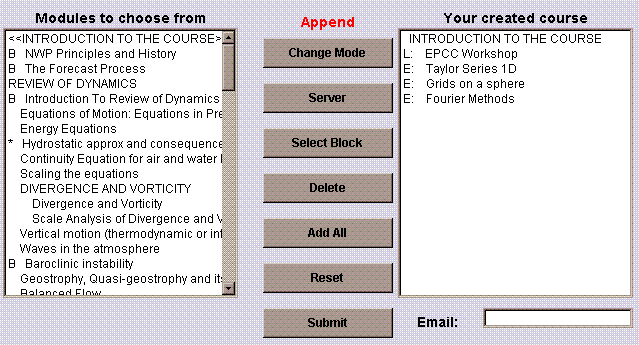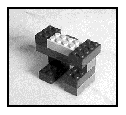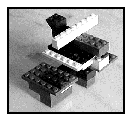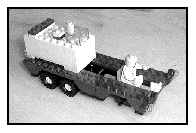
Charles Duncan
Department of Meteorology
University of Edinburgh
Kings Buildings
Edinburgh EH9 3JZ
Scotland
EMAIL: C.Duncan@ed.ac.uk
TEL: +44-131-650-5091
FAX: +44-131-650-5780
This material is copyright. You may use it for non-profit-making educational purposes but contact me at the above address if you wish to use it for any commercial or non-educational purpose.
Why is it that after spending huge sums on different computer-aided-learning initiatives in many different countries we still find the "not invented here" syndrome in effect? There are very few people using CAL material other than those originally involved in its production or specification. Is it simply that these people feel a sense of "ownership" that others do not? If that is the case does it also apply to traditional teaching material? The answer is clearly no! Teachers are usually quite happy to use textbooks produced by others. They also copy diagrams and data from other publications to use as illustrations in lectures or in lecture notes. Teachers also "borrow" ideas from others when they see new conceptual models being used to aid understanding. So why doesn't this happen with CAL material? The answer is that too much CAL material comes as a single package and you either have to accept it or reject it.
One attempt to overcome this is the approach used by EuroMET [1]. EuroMET attempted to overcome this problem by using a modular approach which created module libraries rather than complete courses. The EuroMET course organiser tool then enabled teachers to build the types of courses that suited their learners.

EuroMET went a step further and allowed teachers to create their own modules and integrate them into these courses. To do this teachers use special tools which allow them to easily create the graphical style and navigation of EuroMET and also to use the many Java interactive elements produced by the EuroMET programmers.
This encourages teachers to use both the tools and the existing content through two key features:
This is simply a first step into creating distributed modularised libraries for teaching. The next stages are:
This is similar in principle to Lego bricks. Even if all Lego bricks were the same size and colour it would still be possible to construct interesting objects with them. Their versatility comes from the fact that they are all inter-connectable in a standard way. These basic building blocks can be used by many different constructors who can each produce objects which the others would not have thought of. Of course, we get a great deal more versatility when we use Lego bricks of different shapes, sizes and colours.




Nevertheless, these bricks would be useless if the ‘interface’ which allows one to connect to any other was not absolutely fixed. The range of objects that can now be made with the wide range of bricks and even with the gears and wheels that are available enables the construction of almost any object. We can think of the Lego bricks as modules and the fact that they come in different shapes as sizes as exhibiting a certain degree of granularity. Nevertheless, a major problem with Lego bricks is that almost every construction project requires the builder to start with a huge number of very small bricks. In addition to modules (bricks) with small-scale granularity, it would be particularly useful if the variety of objects was increased to include large-scale granularity. For example this would allow houses to built from pre-built walls, or towns to be built from pre-built houses. Of course, doing this with Lego would spoil most of the fun, but doing it with the elements from which courses are constructed would greatly increase the efficiency and ease with which specially customised courses could be built.
We can think of our educational Lego bricks as a set of "information objects" with each object having properties. Some objects will contain data only – for example, an annotated image or, a more structured example, a series of multiple choice questions with answers and feedback for both correct and incorrect answers. Other objects may be content-free and only process data from other objects – for example, an assessment engine which would present the multiple choice questions to a student and deliver the appropriate feedback as a result of the students interactions. Objects could also contain both data and processing – for example a 3-d model of a complex molecule might have many different forms of processing which would allow it to deliver a ray-traced image, or a video of the molecule rotating on some selected axis, or a VRML object. The first two examples of "content-only" and "content-free" objects highlight two extremes in the community of information producers for education. Content-only producers are usually the academic subject experts with detailed subject domain knowledge. They can provide this domain knowledge to others but often do not want to be involved in the software development tasks of designing presentation system. At the other extreme the content-free community includes both academic and commercial producers of presentation system. In this context a presentation system is simply any means of taking academic content and allowing students to interact with it. The content could be a specification of a simulation model (equations and data) and the presentation system could be the interface to the model.
Some work has already started in trying to define ways in which education objects can interact with each other. The Instructional Management System (IMS) is at the stage of draft specifications for meta-data [2]. Many of the major commercial forces belong to the IMS consortium and the emphasis of their work is on inter-operability [3] between existing educational authoring systems rather than distributed management. The IEEE Learning Technology Standards Committee [4] has a number of working groups independently but in co-operation with the IMS project. The European Commission has recently, (February 1999), finalised a Memorandum of Understanding [5] with over 370 signatories in order to identify standards which will enhance inter-operability in multimedia systems (this project is now called PROMETEUS). The European ARIADNE project [6] has developed meta-data standards and is currently co-ordinating with IEEE and IMS to ensure a common set of meta-data. The Dublin Core [7] formed the initial basis for many of these projects. These major international initiatives show that there is considerable demand for inter-operable, distributed educational systems but that standards are still emerging and there is substantial scope for experimenting. In particular we aim to provide early practical experience with using these emerging standards.
On a more practical level, the Educational Object Economy, EOE, [8] has already established a repository for some educational objects and is also promoting debate on issues concerning Continuous Professional Development [9]. Although EOE is not distributed, small-scale projects have shown the ease with which educational objects produced by different groups can inter-work through CORBA [10] and other models for distributed curriculum development are emerging [11].
At the same time as the user domain is demanding enhanced functionality, a variety of established and emerging standards are offering themselves as possible solutions. These include: Java-RMI [12], CORBA[13], DOM [14], XML[15], RDF [16], HTTP, JDBC [17].
[1] EuroMET, European Meteorology Education and Training, http://euromet.meteo.fr/
[2] IMS, 1999, "IMS Meta-Data Specification", http://www.imsproject.org/work_public/meta-data_did188.html
[3] IMS, 1999, "Enterprise Systems Interoperability Scope", http://www.imsproject.org/work_public/enterprise_scope.html
[4] IEEE Learning Technology Standards Committee (LTSC), http://www.manta.ieee.org/p1484/
[5] European Commission, "Multimedia Access to Education and Training throughout Europe", http://www2.echo.lu/telematics/education/en/news/mou.html
[6] ARIADNE, http://ariadne.unil.ch/project/
[7] Dublin Core Meta-data Initiative, http://purl.oclc.org/dc/
[8] Education Object Economy, http://www.eoe.org/
[9] Dimensions of the Workforce 2008: Towards Continouous Personal Development, http://www.eoe.org/
[10] Roschelle. J, Kaput, J, Stroup. W and Kahn, T.M., 1998, "Scalable Integration of Educational Software: Exploring the Promise of Component Architectures", Journal of Interactive Media in Education. 98(6).
[11] Murray, T, 1998, "A Model for Distributed Curriculum on the World Wide Web", Journal of Interactive Media in Education. 98(6).
[12] Java-RMI, http://www.javasoft.com/products/jdk/rmi/
[13] CORBA, http://www.omg.org/
[14] W3C, 1998, "Document Object Model Level 1 Specification", http://www.w3.org/TR/REC-DOM-Level-1/
[15] XML, 1998, http://www.w3.org/XML/
[16] RDF, 1999, http://www.w3.org/Metadata/RDF/
[17] JDBC, http://java.sun.com/products/jdbc/